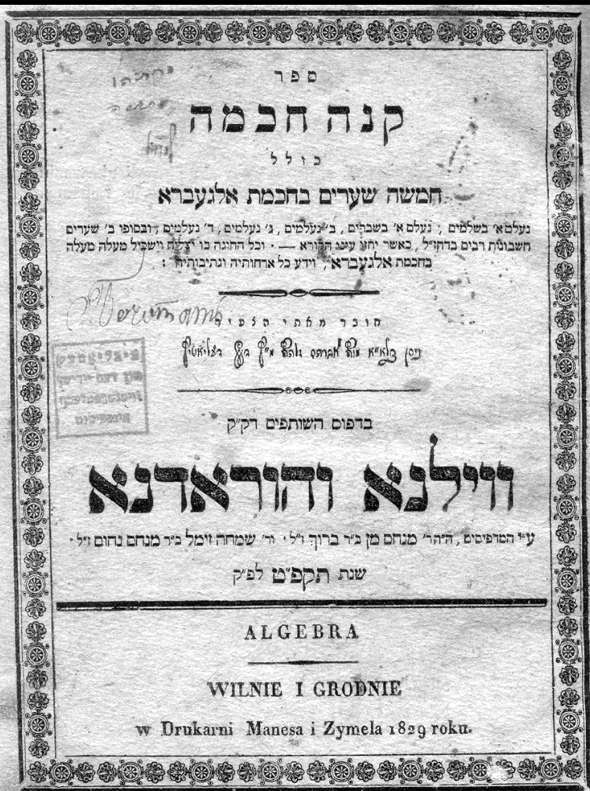In 1829 Rabbi Nissan of Deliatitz published קנה חכמה (you can also download it here). Here is the title page:

The author followed the standard procedure and requested haskamos from two of the leading local rabbinic sages, namely Rabbi Avraham Abele, the av beis din of Vilna, and Rabbi David, the av beis din of Navahrudak:

After an introduction stating more or less what you think he'll say, including obligatory reference to the Vilna Gaon ("close to our own time") and his mathematical work then still in manuscript, he begins at the very beginning, explaining mathematical symbols. Here he explains the = (equal) sign:

He goes on to explain that an upside down kametz amounts to a plus sign, while a regular kametz is his symbol for the minus sign. Why he is reinventing the wheel, I'm not sure. Not being a historian of Hebrew mathematics, my guess is that for some reason these were the historical symbols used in Hebrew math texts. Anyone who wishes to confirm or challenge my guess is welcome.
Naturally it proceeds to the real stuff:

The particular copy scanned by hebrewbooks.org is from the YIVO library, which has 25,000 books from the fabled Strashun Library of Vilna. This library was founded on funds and books left by Matisyahu Strashun in 1892. By 1901 it was a major public library in Vilna, and it was open for 40 years. You can read more about it here).
This copy happens to have been owned by Strashun, as can be seen by his autograph on page 57 of the scan:

This signature is not in the קנה חכמה (unless you count the title page which might be his signature); rather, it is another volume bound together with it, a collection of Russian laws for merchants translated to Hebrew by one Yitzchak Isaac Stein of Minsk in 1825, titled פקודת הרוממות. Thus I am assuming that the algebra book was Strashun's as well, although I am not 100% certain.
